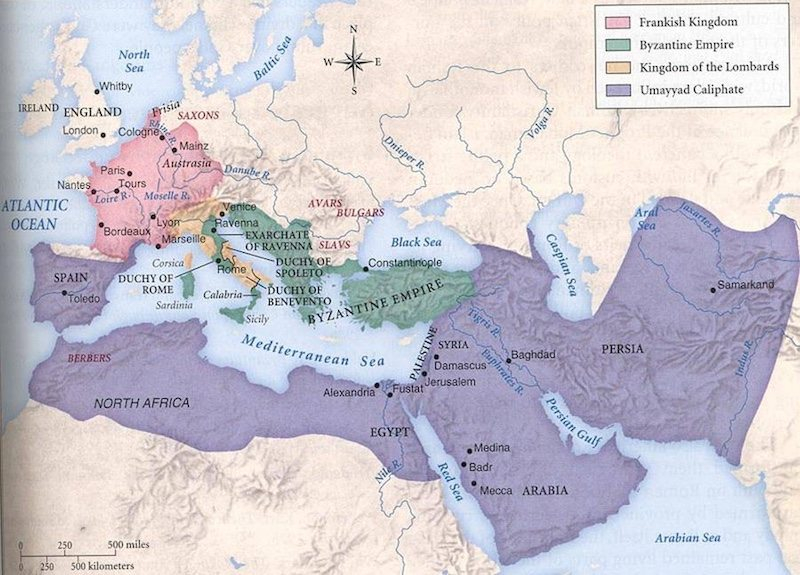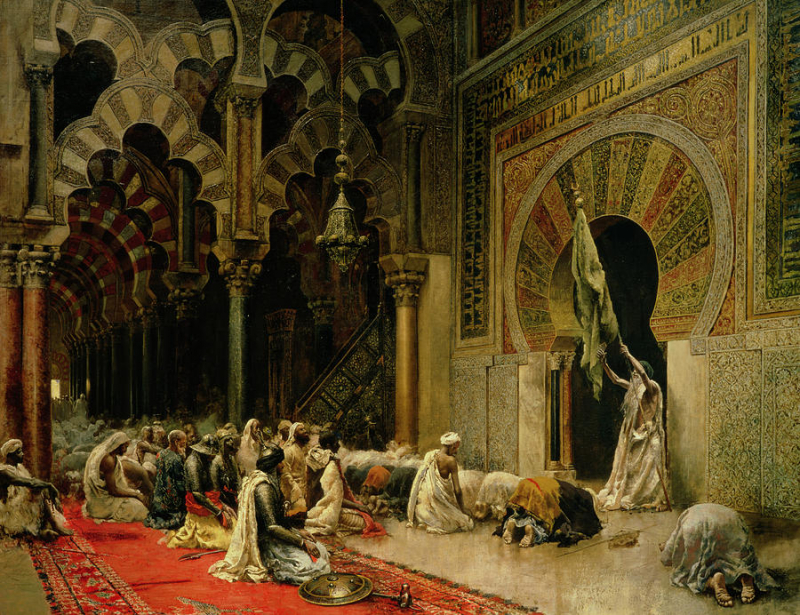Umayyad Caliphate

The second of the four main caliphates to be created after the passing of Muhammad was the Umayyad Caliphate. The Umayyad dynasty controlled the caliphate. The third Rashidun caliph, Uthman ibn Affan (r. 644-656), belonged to the clan. After the First Fitna ended in 661, Muawiya ibn Abi Sufyan, the family established dynastic, hereditary power. He served as Greater Syria's longtime governor. Conflicts over the succession after Mu'awiyah's passing in 680 led to the Second Fitna, and eventually Marwan I from a different branch of the clan took control. After it, Greater Syria remained the Umayyads' primary center of power, with Damascus as their capital.
The Transoxiana, Sindh, the Maghreb, and Hispania (Al-Andalus) were all incorporated under Islamic control by the Umayyads as they carried on the Muslim conquests. One of the biggest empires in history in terms of size, the Umayyad Caliphate had an area of 11,100,000 km2 (4,300,000 sq mi) at its height. A revolt led by the Abbasids in 750 eventually resulted in the dynasty being overthrown throughout the majority of the Islamic world. During the Islamic Golden Age, Cordoba—first an emirate and then a caliphate—became a hub for philosophy, science, medicine, and invention. Dynasty survivors settled there.
By defeating them at the Battle of the Great Zab River in 750, they put an end to the Umayyad dynasty with the aid of a coalition of Persians, Iraqis, and Shiites. Marwan II, the final caliph of the Umayyad dynasty, perished while evading the armies of Abū al-ʿAbbās al-Saffāḥ.











